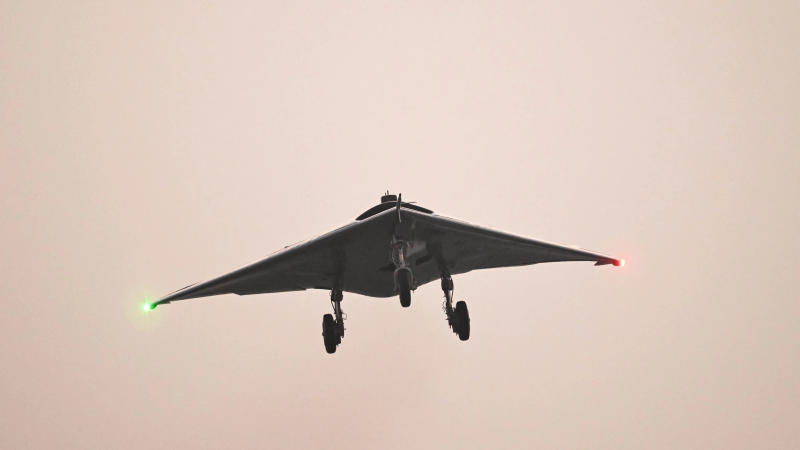Published 23:18 IST, December 15th 2023
India's DRDO masters flying wing technology with AFWT demonstrator modeled after US B2 bombers
The final trial in Karnataka highlights the UAV's advanced features, including indigenous materials and autonomous landing.

December 15 witnessed India's successful test of the Autonomous Flying Wing Technology (AFWT) Demonstrator, placing the nation among elite pioneers in deploying this cutting-edge technology. The Defense Research and Development Organization (DRDO) conducted the final configuration flight trial of the AFWT Demonstrator in Karnataka's Aeronautical Test Range. This achievement marks India's entry into the exclusive club of countries adept at mastering controls for flying wing technology.
The AFWT Demonstrator, developed by DRDO's Aeronautical Development Establishment, is a locally crafted high-speed flying wing Unmanned Aerial Vehicle (UAV). With the latest test being the seventh iteration, the UAV showcased advancements in aerodynamics, control systems, and ground control capabilities.
The aircraft's arrowhead wing platform, constructed from lightweight carbon prepreg composite material, reflects India's self-reliance in aerospace technology. The indigenous composite structure, incorporating fiber interrogators for health monitoring, underscores the nation's commitment to innovation.
AFWT demonstrator: A journey of success and innovation
The journey of the AFWT Demonstrator began with its maiden flight test on July 1, 2022, operating in a fully autonomous mode. Recognized as the 'Stealth Wing Flying Testbed' (SWiFT), the aircraft demonstrated flawless flight, including take-off, waypoint navigation, and a smooth touchdown.
Powered by a Russian NPO Saturn 36MT turbofan engine, the SWiFT platform exhibited operational advantages with its low reflective cross sections, resulting in a minimal radar signature—characterizing it as a stealth machine. One of the remarkable features of the AFWT Demonstrator is its ability to achieve autonomous landing without ground radar, infrastructure, or pilot intervention. This unique capability allows for take-off and landing from any runway with surveyed coordinates, showcasing its versatility.
The successful autonomous landing was facilitated by onboard sensor data fusion using indigenous satellite-based augmentation through GPS-aided GEO-augmented navigation (GAGAN) receivers. The Defense Ministry emphasized the importance of these critical technologies in strengthening the armed forces. While the flying wing design offers advantages such as reduced air resistance, it comes with challenges in stability, requiring additional support systems. Notably, the Demonstrator's airframe, landing gear, and flight control systems have been indigenously developed in India.
Future prospects and defense developments
As the AFWT Demonstrator moves forward, it is expected to undergo further development and testing to explore its potential deployment as an Unmanned Combat Aerial Vehicle (UCAV). The DRDO is actively working on the Ghatak or Autonomous Unmanned Research Aircraft (AURA), intended for the Air Force and Navy, armed with air-launched missiles and precision-guided munitions.
Despite a history of drone development, including platforms like Nishant, Rustom, Tapas, and Lakshay, operational integration into the Indian armed forces has been gradual. The success of the AFWT Demonstrator is anticipated to pave the way for increased funding and advancements in the development of the Ghatak UCAV, heralding a new era in autonomous combat surveillance.
Updated 23:19 IST, December 15th 2023




